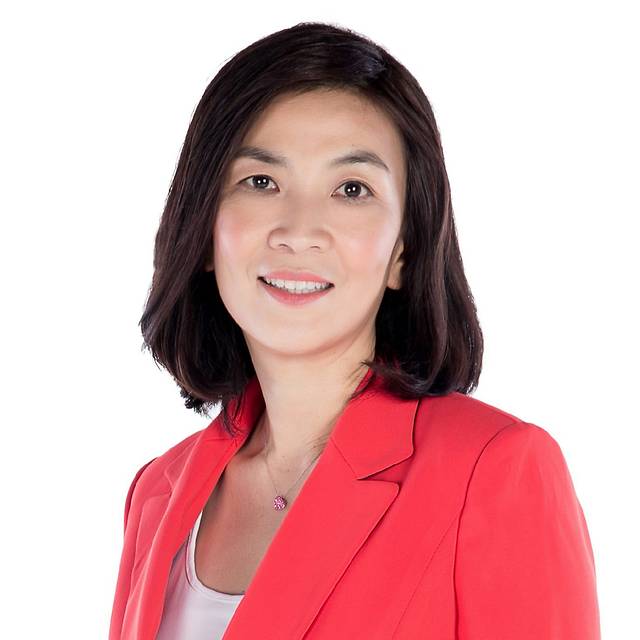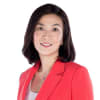Faced with world’s lowest birth rate, South Korea ramps up efforts to keep elderly population active
South Korea is set to become a super-aged society in 2025, when people over the age of 65 will account for 20 per cent of its total population of 52 million. By 2050, the segment could rise to nearly 44 per cent.
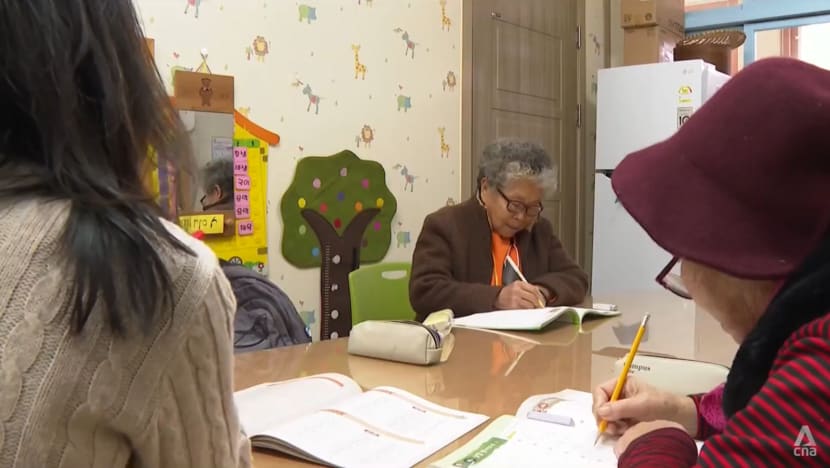
Madam Chung Soon-duk, 82, said it feels good to finally be able to attend school, something she could not do in her younger days as she was busy working on a farm.

This audio is generated by an AI tool.
SEOUL: As South Korea faces a demographic crisis with the world’s lowest birth rate, the country is making efforts to unleash the potential of its elderly population.
Some innovative solutions include letting some of them enrol in school in their golden years and also hiring them as models to walk down fashion runways.
South Korea is set to become a super-aged society in 2025 when people over the age of 65 will account for 20 per cent of its total population of 52 million. By 2050, the segment could rise to nearly 44 per cent of the population.
However, out of every 10 elderly South Koreans, six or more are grappling with insufficient incomes, according to Statistics Korea. The number of elderly people living alone is also rising.
Experts said it is critical for the South Korean government to come up with policies addressing the country’s demographic shift, and create more pathways for the elderly population.
HEADING TO SCHOOL
Some 3,800 elementary schools across the country have closed in the last 40 years due to falling enrolment, especially in rural areas, according to local reports.
One school in Yangpyeong county in Gyeonggi province, Yangdong Elementary School’s Gosung Branch, literally ran out of students as there were nearly no more young children in the county.
In 1994, it had only 14 students left, as many locals moved to the city and households started shrinking across the nation. It was eventually absorbed into a larger school in the county.
As the country's demographic crisis deepened, school principal Hong Seok-jong had an idea to take in seniors as students.
“I realised there might be grandmothers in this village who never went to school, and so I thought it would be good if we enrolled them. I went around the village, and there were those who said they would like to attend the school if it would take them,” he told CNA.
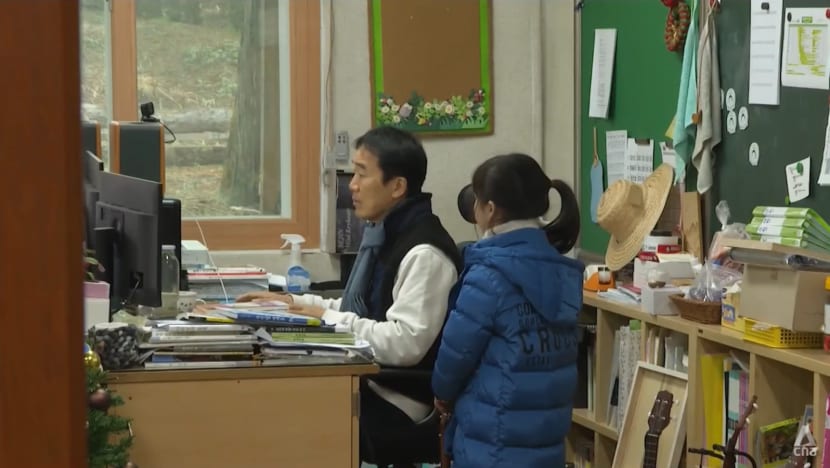
Four grandmothers enrolled in 2021, starting their first-grade education alongside 13 young children.
Among them was Madam Yoon Ok-ja, 82, who never got the chance to attend school when she was a kid.
“I could only write my name and nothing else. In my generation, I was nine years old when the Korean War broke out. During the Korean War, my mother, my younger brother and older sister all died. Only my father, my younger sister and I survived. Just the three of us,” she told CNA.
In South Korea a few decades ago, girls were typically not given an education. Instead, they helped their parents make ends meet, or stayed home to take care of their younger siblings while their parents went to work.
Another student Chung Soon-duk, who is also 82, said it feels good to finally be able to attend school, something she could not do in her younger days as she was busy working on a farm.
“I started in the first year, and now I wonder how I would have spent the last three years if I didn’t come to school, since I am old,” she told CNA.
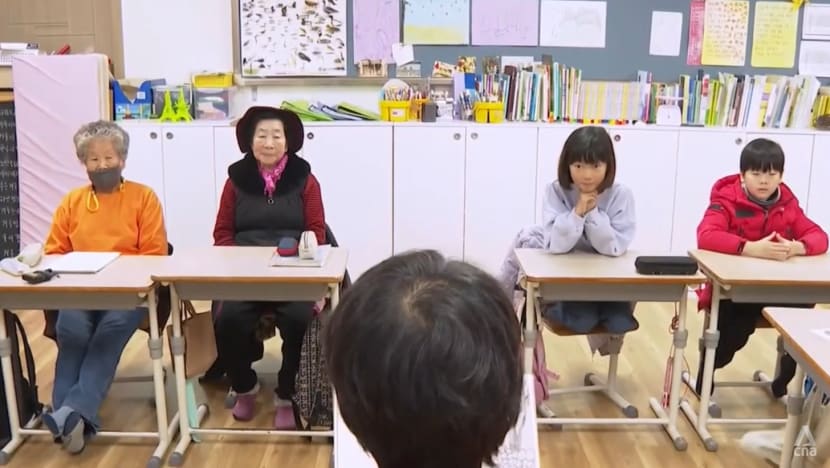
Mr Hong said the happiness and fulfilment felt by the elderly students was unexpected.
“They said to me ‘I am so happy’ and that they didn’t realise that they could be this happy. I don’t think we gave that much thought to this, and so when I heard that, I realised that we made the right decision,” he said.
BENEFICIAL FOR EVERYONE
The size of the class shrank again last year, however, as Madam Chung and Madam Yoon’s two other elderly peers had to drop out due to their health conditions.
South Korean schools like Yangdong Elementary School’s Gosung Branch need such elderly students to survive, while the seniors also benefit by learning how to read and write.
Ms Hong Myung-hee, the teacher in charge of the octogenarian students, told CNA it took some time for everyone to get used to the new arrangement.
“When we first started, we treated them as grandmothers and not really as students. It was the first time for us, and so we were very formal to them and very careful around them. But that felt very uncomfortable for everyone. It’s better now that three years have passed and we got to know each other,” she said.
She added that the elderly students are also eager to learn.
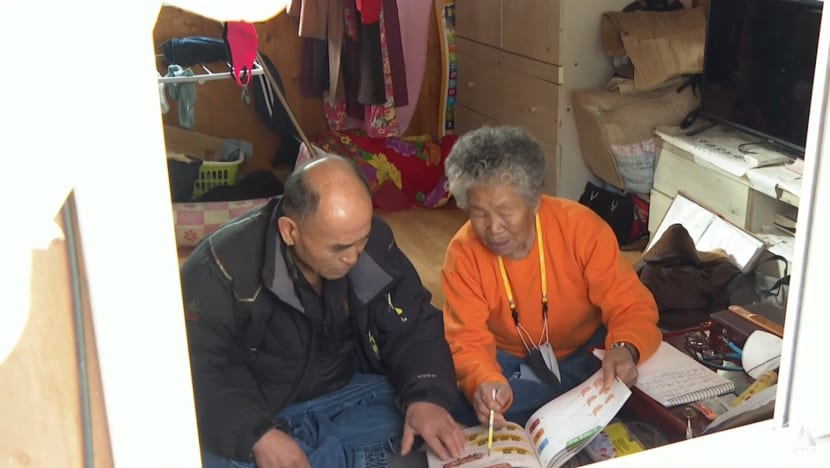
When Madam Chung returns home from school, for instance, she takes her books out and continues studying.
Her son Park Yeong-bok, who also attended the same elementary school when he was young, told CNA she has been very happy since starting lessons there.
Back in his time, there were about 40 to 50 students in one class, he shared.
“She couldn’t write before. But since she went to school in the last three years, she has gotten so much better. She is able to write anything she wants now. And so I’m happy for her,” said Mr Park.
Madam Chung’s fellow senior learner Madam Yoon said she hopes that she can continue to study and at least complete her elementary school journey.
TAKING TO THE RUNWAY
Meanwhile, the Senior Model Association of South Korea has been providing modelling and catwalk training for those in their 70s and 80s, letting them grace the runways at fashion shows.
For two hours every week, the elderly runway aspirants meet at the non-profit body, which was set up about seven years ago.
The minimum age for membership is 45 years old, and participants are given proper catwalk training, although many do it as a hobby to stay active and healthy.
The initiative allows elderly South Koreans like Park Woo-hee, who is in her mid-70s, to realise their catwalk dreams.
“I couldn’t become a model because I had to be tall. I always wanted to do this. Now it’s the time for that because even if I’m short, I can still do this. You just need passion for this,” Madam Park told CNA.
“This is so much fun, and I think this is one of the best things we women can enjoy doing as seniors.”
Fellow model Ha Yoon Jeong, who also took part in a recent fashion show, joined the association about a year back.
The 84-year-old told CNA the activity makes her feel motivated to wake up every morning.
“This is great. When I do this, I feel stronger and younger, and it makes me feel good too. It’s not easy for mothers like me to do this, but my daughter introduced me to this and I love it,” she said.
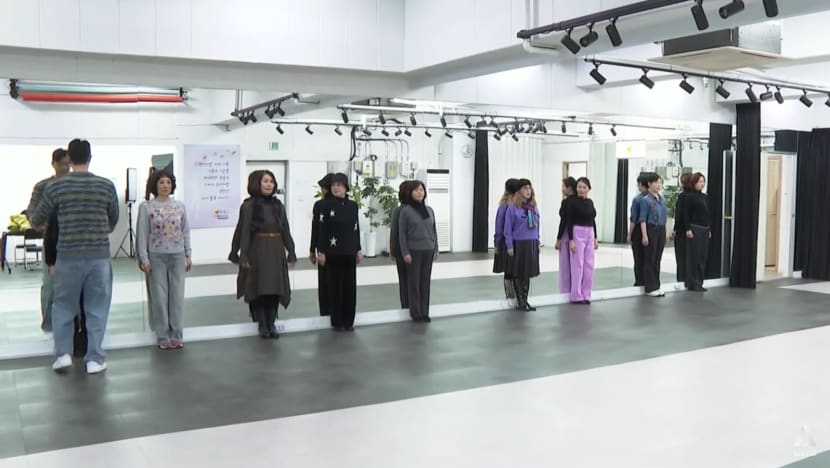
Trainer Kim Moo-young, who is a former model himself, told CNA it was not easy at the beginning for him to train the seniors, given their age gap.
“It was psychologically difficult. But having taught other students and these seniors, I find (the seniors) are much more passionate about this and their willingness to learn is much higher. It’s like we have rekindled a fire in them,” he said.
He slowly adjusted his teaching methods and lowered the intensity of training in the nine-month course.
Mr Kim said it is a pity that there is not that much demand for senior models in South Korea, unlike in the West where it is more common for those in their 60s and 70s to make a name for themselves on the runway.








